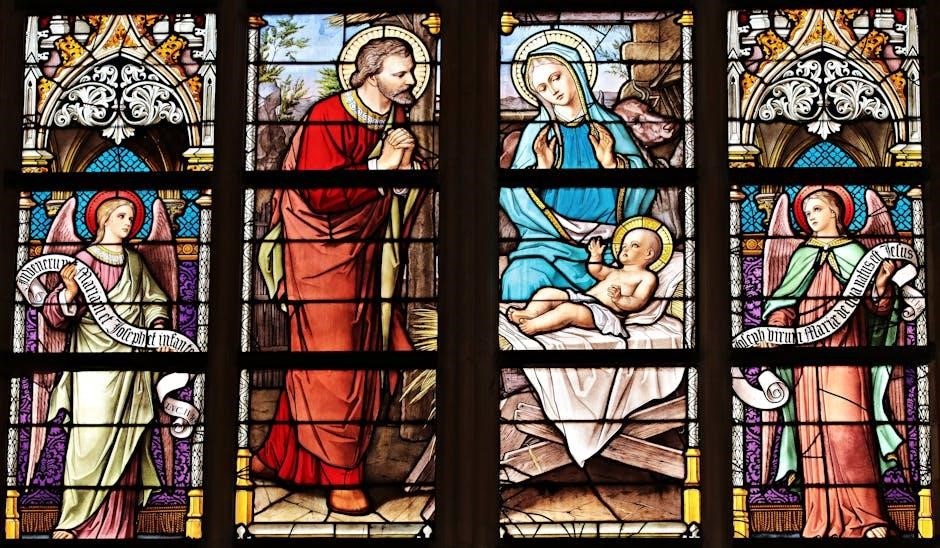The Litany of the Sacred Heart of Jesus is a traditional Catholic devotion, fostering deep reverence and love for Christ’s divine mercy and compassion.
Overview of the Litany and Its Significance
The Litany of the Sacred Heart of Jesus is a powerful devotional prayer, emphasizing reparation and adoration of Christ’s divine love. It serves as a heartfelt expression of devotion, seeking mercy and fostering a deeper connection to Jesus’ compassion. The litany is particularly revered during the Month of the Sacred Heart, offering a structured format for believers to reflect on His divine attributes and seek spiritual renewal through its recitation.
History and Origins of the Litany of the Sacred Heart
The Litany of the Sacred Heart originated in 17th-century Catholic devotion, evolving over time before its official approval by Pope Leo XIII in 1899.
Development of the Litany in Catholic Tradition
The Litany of the Sacred Heart evolved from 17th-century devotional practices, blending adoration and reparation. It gained prominence through the efforts of saints like Margaret Mary Alacoque, who emphasized the Sacred Heart’s merciful love. Over time, the litany was refined and officially approved by Pope Leo XIII in 1899, becoming a cornerstone of Catholic devotion. Its development reflects the Church’s deepening veneration of Christ’s Heart, symbolizing divine love and redemption, and fostering a culture of prayer and penance among the faithful.
Pope Leo XIII’s Approval and Its Impact
Pope Leo XIII formally approved the Litany of the Sacred Heart in 1899, significantly elevating its status in Catholic devotion. This endorsement marked a pivotal moment, encouraging widespread use in public worship and private prayer. The litany became a unifying prayer, deepening the faithful’s connection to Christ’s Heart, symbolizing divine mercy and love. Its approval also fostered a renewed emphasis on reparation and adoration, enriching the spiritual practices of Catholics worldwide and solidifying its place in Church tradition.
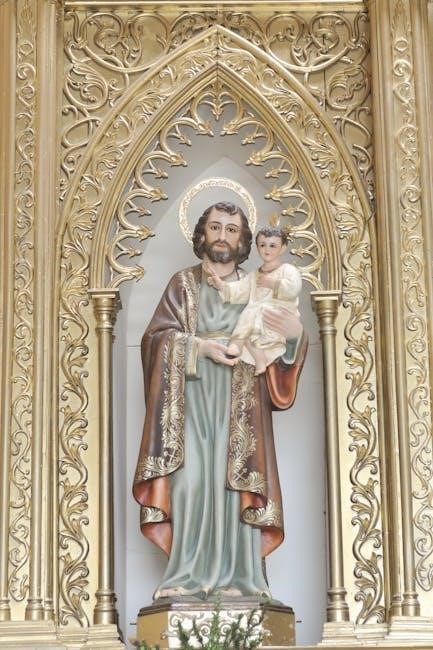
Structure and Key Elements of the Litany
The litany is structured with invocations and responses, emphasizing adoration and reparation. It includes prayers like “Heart of Jesus, have mercy on us,” fostering devotion and spiritual reflection.
Invocations and Prayers Within the Litany
The litany contains powerful invocations, such as “Heart of Jesus, have mercy on us,” and “Lamb of God, who takes away the sins of the world, have mercy on us.” These prayers reflect deep adoration and reparation, seeking divine forgiveness and grace. They emphasize Christ’s boundless love and mercy, encouraging the faithful to align their hearts with His. The litany’s repetitive structure fosters a meditative and communal prayer experience, drawing believers closer to the Sacred Heart’s transformative power and compassion.
The Role of Reparation in the Litany
The litany emphasizes reparation for sins committed against the Sacred Heart of Jesus, offering prayers like “Lamb of God, who takes away the sins of the world, have mercy on us.” This devotion seeks to atone for offenses against Christ’s boundless love and divine mercy. By invoking His Heart, the faithful express sorrow and commitment to amend their lives, fostering a deeper connection to His redemptive love and mercy.
The Litany of the Sacred Heart in PDF Format
The Litany of the Sacred Heart is widely available in PDF format, offering convenient access for personal and communal devotion, fostering deeper connection to Christ’s love.
Availability of Litany PDFs for Devotional Use
The Litany of the Sacred Heart of Jesus is readily available in PDF format, accessible for free download from various Catholic websites and devotional resources. These PDFs provide a convenient way to engage in prayer, offering a structured format for personal or communal recitation. Many versions include the full litany with its 33 invocations, making it easy to adore and offer reparation to the Sacred Heart. This digital accessibility ensures the litany remains a vibrant part of modern Catholic devotion, fostering spiritual growth and intimacy with Christ.
Benefits of Using the Litany in Digital Format
Using the Litany of the Sacred Heart in PDF format offers unparalleled convenience and accessibility. Digital versions enable easy sharing, printing, and portability across devices, making devotion more flexible. The PDF format preserves the litany’s structure and beauty, ensuring clarity and readability. Additionally, digital access reduces the need for physical storage, making it environmentally friendly. This modern approach to a timeless prayer fosters deeper engagement with the Sacred Heart, blending tradition with technological advancements for contemporary devotees.
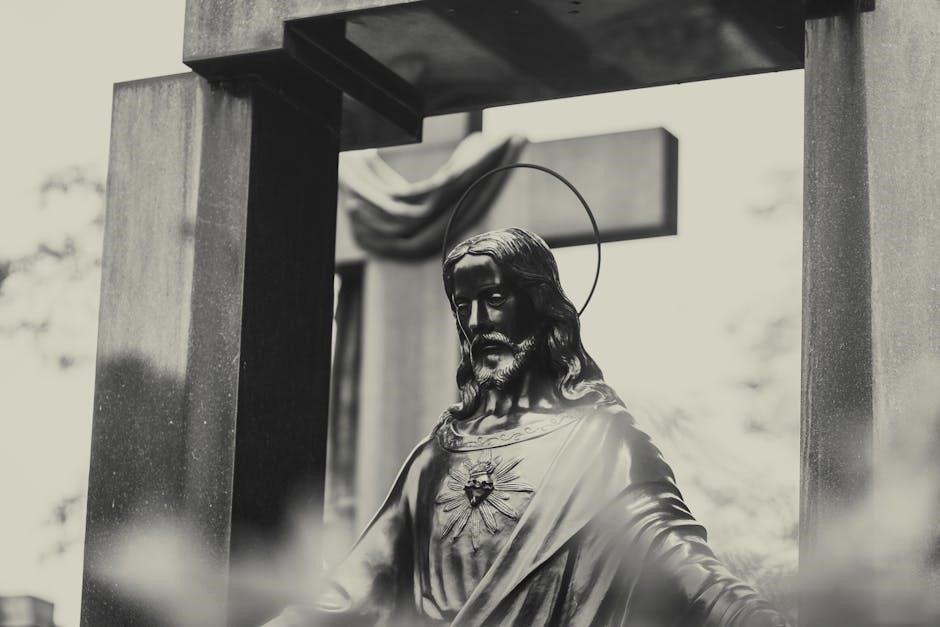
Spiritual Significance of the Litany
The Litany of the Sacred Heart deepens devotion to Jesus’ divine love, fostering adoration, reparation, and a transformative connection to His merciful Heart, enriching faith and life.
Connection to the Sacred Heart of Jesus
The Litany of the Sacred Heart of Jesus PDF embodies a profound connection to Christ’s Heart, symbolizing His boundless love and mercy. Through its prayers, the devotion invites believers to reflect on Christ’s passion and humanity, encouraging them to align their hearts with His. This sacred practice serves as a bridge between the divine and the faithful, fostering a deeper spiritual relationship and a commitment to living according to His teachings.
How the Litany Fosters Personal and Communal Devotion
The Litany of the Sacred Heart of Jesus PDF serves as a powerful tool for both personal and communal devotion. Its repetitive, meditative structure allows individuals to deepen their spiritual reflection and connection with Christ’s love. When recited in groups, it strengthens communal bonds, fostering unity and shared faith. The litany’s focus on reparation and adoration encourages believers to offer their prayers collectively, creating a sense of solidarity and shared purpose in honoring the Sacred Heart.
Practicing the Litany in Daily Life
The Litany of the Sacred Heart of Jesus PDF can be easily integrated into daily prayer routines, offering a convenient and meaningful way to deepen devotion to Christ.
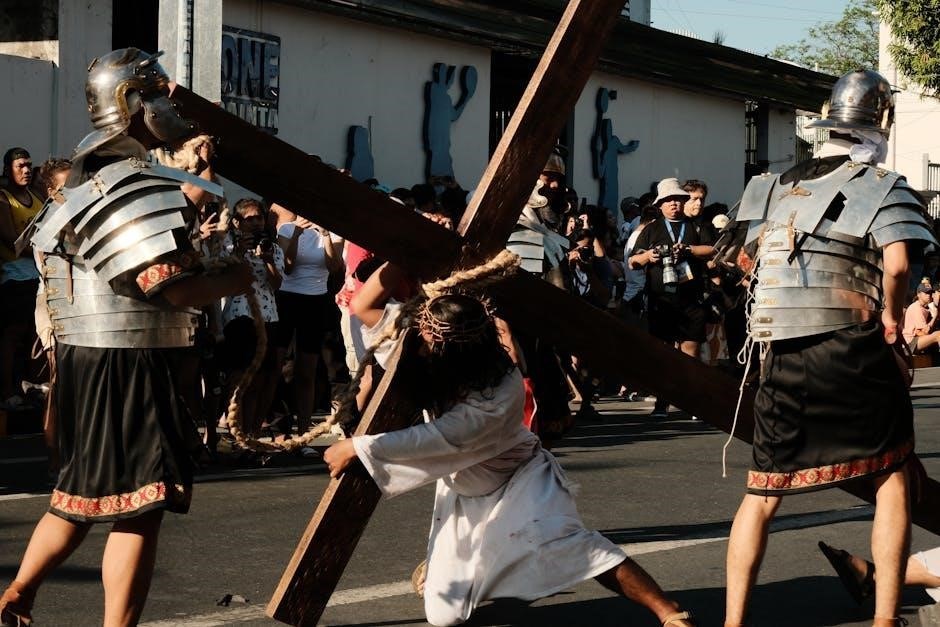
Guidelines for Reciting the Litany
The Litany of the Sacred Heart of Jesus is traditionally recited during the month of June, dedicated to the Sacred Heart. It is often prayed in groups or individually, emphasizing devotion and reparation. The litany begins with invocations to God and Christ, followed by specific praises and petitions to the Sacred Heart. Each invocation ends with a response, such as “Have mercy on us.” Regular recitation fosters spiritual growth and deepens one’s connection to Christ’s divine love and mercy, making it a powerful devotional practice.
Incorporating the Litany into Prayer Routines
The Litany of the Sacred Heart of Jesus can be seamlessly integrated into daily prayer routines, offering a meaningful way to honor Christ’s love. Many Catholics recite it during morning or evening prayers, while others incorporate it into family Rosary sessions. Regular recitation fosters a deeper connection to Christ’s divine mercy and compassion. Additionally, praying the litany during Eucharistic adoration or personal reflection enhances its spiritual impact, making it a powerful tool for nurturing devotion and faith.
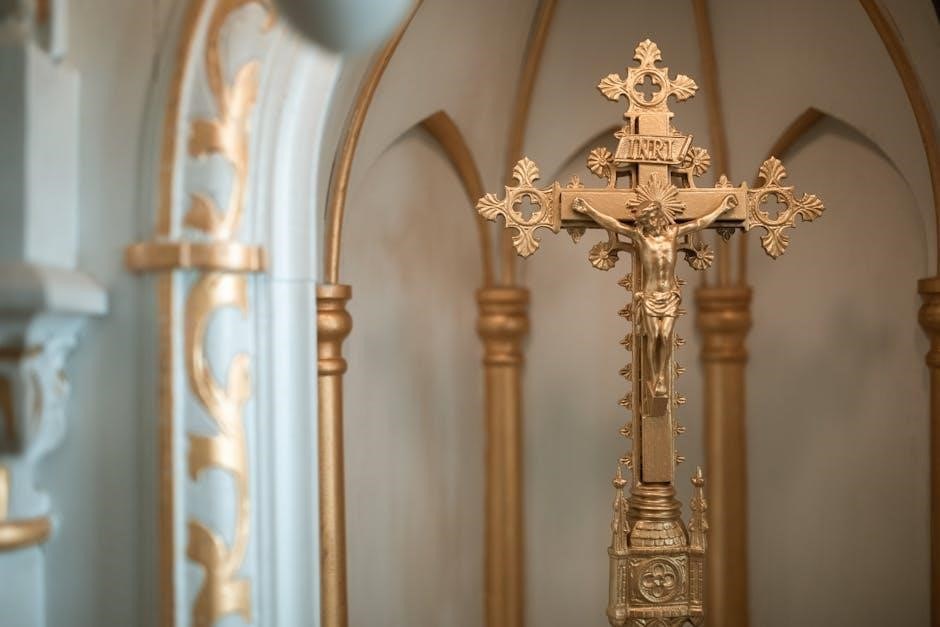
The Role of the Litany in Catholic Tradition
The Litany of the Sacred Heart of Jesus holds a revered place in Catholic devotion, serving as a powerful prayer for reparation and adoration of Christ’s divine love.
Its Place in the Month of the Sacred Heart
The Litany of the Sacred Heart of Jesus holds a central role during the Month of the Sacred Heart, traditionally celebrated in June. This period emphasizes devotion to Christ’s boundless love and mercy, with the Litany serving as a focal prayer for reparation and adoration. Its recitation in churches and homes underscores the Catholic Church’s commitment to honoring the Sacred Heart, fostering spiritual reflection and alignment with Christ’s divine will during this sacred time.
Cultural and Devotional Practices Surrounding the Litany
The Litany of the Sacred Heart of Jesus is deeply intertwined with Catholic devotional life, often recited during Mass, adoration, and personal prayer. Its use in June, the Month of the Sacred Heart, is particularly prominent, fostering a culture of reparation and adoration. Many faithful incorporate it into novenas, processions, and family devotions, while others share PDF versions to spread its spiritual benefits widely, enhancing accessibility for modern devotion and deepening connection to Christ’s boundless love.
The Litany of the Sacred Heart of Jesus remains a timeless devotion, offering a profound connection to Christ’s love and mercy, guiding believers in worship and reparation.
The Enduring Relevance of the Litany of the Sacred Heart
The Litany of the Sacred Heart of Jesus remains a vital devotion, offering a timeless connection to Christ’s boundless love and mercy. Its invocation of the Sacred Heart continues to inspire believers, fostering repentance and spiritual renewal. As a prayerful response to God’s mercy, it bridges the past and present, inviting all to reflect on Christ’s sacrifice and love. Its availability in PDF format ensures accessibility, making it a cherished resource for personal and communal devotion in modern times.
